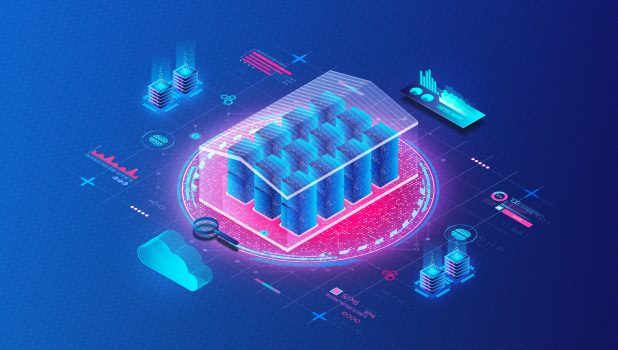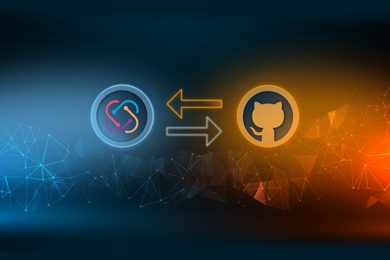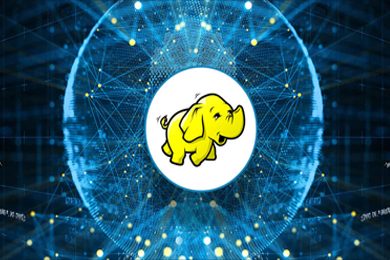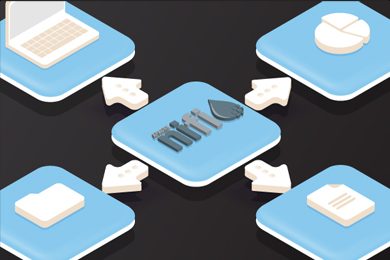This plan includes
- Limited free courses access
- Play & Pause Course Videos
- Video Recorded Lectures
- Learn on Mobile/PC/Tablet
- Quizzes and Real Projects
- Lifetime Course Certificate
- Email & Chat Support
What you'll learn?
- Fundamentals of Data Integration: Understand the core concepts and types of data integration and explore real-world examples.
- Navigating IBM Information Server: Get acquainted with the components of IBM Information Server and its role in data integration.
- IBM Information Server Administration: Learn to navigate the IBM Information Server Administration Console and practice essential administrative tasks.
- Exploring IBM DataStage: Dive into the architecture of IBM DataStage, its key components, and practical uses
- Developing in IBM DataStage: Work hands-on in DataStage, create projects, explore job types, and utilize design elements for parallel processing.
- DataStage Administration: Acquire practical skills in DataStage administration, including user management, permissions, and environment variables.
- Metadata Management: Practice metadata management using DataStage Designer, importing, and exporting components.
- Creating Parallel Jobs: Engage in practical sessions to create parallel jobs, define parameters, and document your jobs effectively.
- Accessing Sequential Data: Hands-on experience in handling sequential data, utilizing the Sequential File stage, and managing reject links.
- Implementing Partitioning and Collecting Algorithms: Gain practical insights into partition parallelism, partitioning algorithms, and collecting strategies.
- Combining Data with Stages: Work with Lookup, Join, Merge, and Funnel stages, and practice their applications in real-world scenarios.
- Group Processing Stages: Learn to sort data effectively, remove duplicates, and utilize Aggregator stages in practical exercises.
- Transforming Data: Practice using the Transformer stage, constraints, and debugging techniques for data transformation.
- Repository Functions: Explore practical aspects of using the repository, finding differences between jobs, and performing impact analyses.
- Working with Relational Data: Engage in hands-on activities involving connector stages, reading and writing to database tables, and utilizing data connection ob
- Job Sequence Control: Gain practical experience in creating job sequences, defining triggers, and managing job activities through various stages.
- Real Practice: AWS Cloud Integration: Apply your skills to integrate data with AWS Cloud services in real-world scenarios.
Course Overview
Unlock the power of data integration with IBM DataStage, the industry-leading ETL (Extract, Transform, Load) tool. In this comprehensive course, you'll embark on a journey from data integration basics to advanced techniques, empowering you to harness the full potential of your data.
What You'll Learn:
-
Foundations of Data Integration: Begin by understanding the core concepts and types of data integration, laying a strong foundation for your journey.
-
IBM Information Server: Explore the IBM Information Server ecosystem and its vital components to comprehend where DataStage fits in.
-
Hands-On Administration: Get hands-on with DataStage administration tasks, managing users, roles, and permissions with ease.
-
Mastering Metadata: Learn to work effectively with metadata, a crucial aspect of data integration, to streamline your processes.
-
Parallel Jobs Creation: Dive into parallel job creation, understand its intricacies, and design efficient parallel jobs.
-
Accessing Sequential Data: Master the art of accessing sequential data, a crucial skill in data integration.
-
Advanced Algorithms: Explore partitioning and collecting algorithms, vital for efficient data processing.
-
Combine Data Effectively: Get comfortable with stages like Lookup, Join, Merge, and Funnel to combine data seamlessly.
-
Group Processing Stages: Learn to group process data, sort it, and aggregate it effectively.
-
Transformer Stage: Dive deep into the Transformer stage and its capabilities for data transformation.
-
Repository Functions: Understand repository functions, impact analysis, and how to compare different jobs.
-
Relational Data Integration: Work with relational data using connector stages, read from and write to database tables.
-
Job Sequence Control: Master job sequencing, control the flow of jobs, and create complex workflows.
-
Real-world Practice: Apply your knowledge in real-world scenarios with practical AWS Cloud and Data Vault integration sessions.
Pre-requisites
- Basic Understanding of Data Concepts: A fundamental grasp of data concepts is recommended. Students should understand terms like data sources, data transformation, and data loading.
- SQL Knowledge (Optional): While not mandatory, having some familiarity with SQL (Structured Query Language) can be beneficial, especially when working with relational databases.
- Access to IBM DataStage: Ideally, students should have access to IBM DataStage software to practice and follow along with the course.
- IBM DataStage Software (Optional): If students want to practice the skills learned in the course, having access to IBM DataStage software is beneficial
- Desire to Learn: A genuine interest in data integration and a willingness to learn and practice the concepts taught in the course are essential.
Target Audience
- Data Professionals: Data analysts, data engineers who want to enhance their data integration skills using IBM DataStage.
- IT Professionals: IT specialists, software developers, and database administrators who need to work with data integration solutions.
- Business Analysts: Business analysts who want to understand how data integration impacts their data-driven decision-making processes.
- Students and Graduates: Students pursuing degrees or recent graduates looking to build a foundation in data integration and expand their job prospects.
- IBM DataStage Users: Users of IBM DataStage looking to deepen their knowledge, explore advanced features, and improve their job performance.
- Anyone Interested in Data Integration: If you have a general interest in data integration and want to learn how IBM DataStage can be used for these purposes, this course is suitable for you.
Curriculum 273 Lectures 08:01:57
Section 1 : Introduction to Data Integration
Section 2 : Data Integration in Data management
- Lecture 1 :
- The agenda of the session
- Lecture 2 :
- Data Integration in Data management
- Lecture 3 :
- Some concepts and kinds of Data Integration
- Lecture 4 :
- What does data integration look like?
Section 3 : Introduction to IBM Information Server
- Lecture 1 :
- The agenda of this session
- Lecture 2 :
- Introduction to IBM Information Server
- Lecture 3 :
- Introduction to IBM Information Server (cont.)
- Lecture 4 :
- Key IBM Information Server Components
- Lecture 5 :
- IBM Information Server topology
- Lecture 6 :
- IBM Information Server topology Cont.
Section 4 : IBM Information Server Administration Console
- Lecture 1 :
- The agenda of this session
- Lecture 2 :
- IBM Information Server Administration Console
- Lecture 3 :
- IBM Information Server Administration Console (Cont.)
- Lecture 4 :
- Real Practice 1 – IBM Information Server Administration Console
Section 5 : Introduction to IBM DataStage
- Lecture 1 :
- The agenda of this session
- Lecture 2 :
- DataStage Architecture
- Lecture 3 :
- DataStage Administrator
- Lecture 4 :
- DataStage Designer
- Lecture 5 :
- DataStage Director
Section 6 : Developing in DataStage and Features
- Lecture 1 :
- The agenda of this session
- Lecture 2 :
- Developing in DataStage
- Lecture 3 :
- DataStage project repository
- Lecture 4 :
- Types of DataStage Jobs
- Lecture 5 :
- Design Elements of Parallel Jobs
- Lecture 6 :
- Partition Parallelism
- Lecture 7 :
- Multi-Node Partitioning
- Lecture 8 :
- Job design versus execution
- Lecture 9 :
- Configuration File
- Lecture 10 :
- Configuration File (Cont.)
- Lecture 11 :
- Summary - Developing in IBM DataStage and Features
Section 7 : DataStage Administration
- Lecture 1 :
- The agenda of this session
- Lecture 2 :
- Unit Objectives - DataStage Administration
- Lecture 3 :
- Information Server Web Console - Administration
- Lecture 4 :
- Web Console Login Window
- Lecture 5 :
- User and Group Management
- Lecture 6 :
- Creating a DataStage User ID
- Lecture 7 :
- Assign DataStage Roles
- Lecture 8 :
- DataStage Credentials
- Lecture 9 :
- DataStage Credentials Default Mapping
- Lecture 10 :
- Logging onto DataStage Administrator
- Lecture 11 :
- InforSphere DataStage Administration
- Lecture 12 :
- DataStage Administrator Tabs
- Lecture 13 :
- Environment variables
- Lecture 14 :
- Environment reporting variables
- Lecture 15 :
- DataStage Administrator Permissions tab
- Lecture 16 :
- Add users and groups
- Lecture 17 :
- Specify DataStage Role
- Lecture 18 :
- DataStage Administrator Logs Tab
- Lecture 19 :
- DataStage Administrator Parallel Tab
- Lecture 20 :
- Real Practice 2 - Task 1 - Information Server Administration - User & Group
- Lecture 21 :
- Real Practice 2 - Task 2 - Project Properties - General
- Lecture 22 :
- Real Practice 2 - Task 3 - Project Properties - Environment
- Lecture 23 :
- Real Practice 2 - Task 4 - Project Properties - User & Group
- Lecture 24 :
- Summary - DataStage Administration
Section 8 : Work with metadata
- Lecture 1 :
- The agenda of this session
- Lecture 2 :
- Unit Objectives - Work with metadata
- Lecture 3 :
- Logging onto DataStage Designer
- Lecture 4 :
- DataStage Designer
- Lecture 5 :
- DataStage project repository
- Lecture 6 :
- Import and Export
- Lecture 7 :
- Exporting DataStage Components
- Lecture 8 :
- Export objects
- Lecture 9 :
- Import Procedure
- Lecture 10 :
- Import objects
- Lecture 11 :
- Real Practice 3 - Export & Import DataStage Components
- Lecture 12 :
- Summary - Work with metadata
Section 9 : Create Parallel Job
- Lecture 1 :
- The agenda of this session
- Lecture 2 :
- Unit objectives - Create parallel jobs
- Lecture 3 :
- What is a parallel job?
- Lecture 4 :
- Tools Palette
- Lecture 5 :
- Create a new parallel job
- Lecture 6 :
- Drag stages and links from the Palette
- Lecture 7 :
- Rename links and stages
- Lecture 8 :
- Connection Properties
- Lecture 9 :
- Job parameters
- Lecture 10 :
- Define a job parameter
- Lecture 11 :
- Use a job parameter in a stage
- Lecture 12 :
- Add job documentation
- Lecture 13 :
- Job Properties window documentation
- Lecture 14 :
- Compile and run a job
- Lecture 15 :
- Compile, Errors or Successful message
- Lecture 16 :
- DataStage Director
- Lecture 17 :
- Run options
- Lecture 18 :
- Performance statistics
- Lecture 19 :
- Director Status View
- Lecture 20 :
- Job log, viewed from designer
- Lecture 21 :
- Other job log functions
- Lecture 22 :
- Director monitor
- Lecture 23 :
- Run jobs from the command line
- Lecture 24 :
- Parameter sets
- Lecture 25 :
- Create a parameter set
- Lecture 26 :
- Defining the parameters
- Lecture 27 :
- Defining values files
- Lecture 28 :
- Load a parameter set into a job
- Lecture 29 :
- Use parameter set parameters
- Lecture 30 :
- Run jobs with parameter set parameters
- Lecture 31 :
- Real Practice 4 - Task 1 - Database --> Transformer --> Database
- Lecture 32 :
- Real Practice 4 - Task 2 - Database --> Transformer --> Database with Parameter
- Lecture 33 :
- Summary - Create parallel jobs
Section 10 : Create parallel jobs - Access sequential data
- Lecture 1 :
- The agenda of this session
- Lecture 2 :
- Unit objectives - Access sequential data
- Lecture 3 :
- How sequential data is handled
- Lecture 4 :
- Features of the Sequential File stage
- Lecture 5 :
- Job design with Sequential File Stages
- Lecture 6 :
- Sequential File stage properties
- Lecture 7 :
- Format Tab
- Lecture 8 :
- Column Tab
- Lecture 9 :
- Multiple Readers
- Lecture 10 :
- Writing to a sequential file
- Lecture 11 :
- Reject links
- Lecture 12 :
- Source and target reject links
- Lecture 13 :
- Setting the Reject Mode property
- Lecture 14 :
- Real Practice 5 - Task 1 - File --> Transformer --> File
- Lecture 15 :
- Real Practice 5 - Task 2 - File --> Transformer --> DataSet with Parameter
- Lecture 16 :
- Real Practice 6 - File --> Transformer --> DataSet
- Lecture 17 :
- Summary - Access sequential data
Section 11 : Partitioning and collecting algorithms
- Lecture 1 :
- The agenda of this session
- Lecture 2 :
- Unit objectives - Partitioning and collecting algorithms
- Lecture 3 :
- Partition parallelism
- Lecture 4 :
- Stage partitioning
- Lecture 5 :
- DataStage hardware environments
- Lecture 6 :
- Partitioning algorithms
- Lecture 7 :
- Collecting
- Lecture 8 :
- Collecting (Cont.)
- Lecture 9 :
- Collecting algorithms
- Lecture 10 :
- Keyless versus keyed partitioning algorithms
- Lecture 11 :
- Round Robin and Random partitioning
- Lecture 12 :
- Entire partitioning
- Lecture 13 :
- Hash partitioning
- Lecture 14 :
- Modulus partitioning
- Lecture 15 :
- Auto partitioning
- Lecture 16 :
- Partitioning / collecting link icons
- Lecture 17 :
- More partitioning icons
- Lecture 18 :
- Specify a partitioning algorithm
- Lecture 19 :
- Specify a collecting algorithm
- Lecture 20 :
- Configuration file
- Lecture 21 :
- Example configuration file
- Lecture 22 :
- Adding $APT_CONFIG_FILE as a job parameter
- Lecture 23 :
- Editing configuration files
- Lecture 24 :
- Summary - Partitioning and collecting algorithms
Section 12 : Combine Data
- Lecture 1 :
- The agenda of this session
- Lecture 2 :
- Unit objectives - Combine Data
- Lecture 3 :
- Combine Data
- Lecture 4 :
- Lookup, Join, Merge stages
- Lecture 5 :
- Lookup Stage features
- Lecture 6 :
- Lookup types
- Lecture 7 :
- Match Lookup Stage Example
- Lecture 8 :
- Lookup Stage with an equality match
- Lecture 9 :
- Define the Lookup key
- Lecture 10 :
- Specify the output columns
- Lecture 11 :
- Lookup failure actions
- Lecture 12 :
- Specifying lookup failure actions
- Lecture 13 :
- Lookup stage with reject link
- Lecture 14 :
- Real Practice 7 - Task 1 - Combine data with Lookup Stage
- Lecture 15 :
- Join stage
- Lecture 16 :
- Job with Join Stage
- Lecture 17 :
- Join Stage Properties
- Lecture 18 :
- Output Mapping tab
- Lecture 19 :
- Merge stage
- Lecture 20 :
- Merge Stage Job
- Lecture 21 :
- Merge Stage Properties
- Lecture 22 :
- Funnel stage
- Lecture 23 :
- Funnel Stage Example
- Lecture 24 :
- Funnel Stage Properties
- Lecture 25 :
- Real Practice 7 - Task 2 - Combine data with Join Stage
- Lecture 26 :
- Real Practice 7 - Task 3 - Combine Data with Merge Stage
- Lecture 27 :
- Real Practice 7 - Task 4 - Combine Data with Funnel Stage
- Lecture 28 :
- Summary - Combine Data
Section 13 : Group processing stages
- Lecture 1 :
- The agenda of this session
- Lecture 2 :
- Unit objectives - Group processing stages
- Lecture 3 :
- Group processing stages
- Lecture 4 :
- Sort data
- Lecture 5 :
- Sorting alternatives
- Lecture 6 :
- In-Stage sorting
- Lecture 7 :
- Sort Stage Properties tab
- Lecture 8 :
- Specify sort keys
- Lecture 9 :
- Partition sorts
- Lecture 10 :
- Aggregator stage
- Lecture 11 :
- Job with Aggregator Stage
- Lecture 12 :
- Aggregation types
- Lecture 13 :
- Aggregation types (Cont.)
- Lecture 14 :
- Output Mapping Tab
- Lecture 15 :
- Output Columns tab
- Lecture 16 :
- Calculation aggregation type
- Lecture 17 :
- Grouping methods
- Lecture 18 :
- Remove duplicates
- Lecture 19 :
- Remove Duplicates stage job
- Lecture 20 :
- Remove Duplicates stage properties
- Lecture 21 :
- Fork - Join Job Design
- Lecture 22 :
- Real Practice 8 - File --> Transformer --> DataSet --> Aggregator --> File
- Lecture 23 :
- Summary - Group processing stages
Section 14 : Transfromer Stage
- Lecture 1 :
- The agenda of this session
- Lecture 2 :
- Unit Objectives - Transformer stage
- Lecture 3 :
- Transformer stage
- Lecture 4 :
- Job with a Transformer stage
- Lecture 5 :
- Inside the Transformer stage
- Lecture 6 :
- Transformer stage elements
- Lecture 7 :
- Transformer stage elements
- Lecture 8 :
- Constraints
- Lecture 9 :
- Constraints example
- Lecture 10 :
- Define a constraint
- Lecture 11 :
- Use the expression editor
- Lecture 12 :
- Otherwise links for data integrity
- Lecture 13 :
- Real Practice 9 - File --> Transformer --> File
- Lecture 14 :
- Parallel job debugger
- Lecture 15 :
- Set breakpoints
- Lecture 16 :
- Edit breakpoints
- Lecture 17 :
- Running a parallel job in the debugger
- Lecture 18 :
- Add columns to the watch list
- Lecture 19 :
- Checkpoint - Transformer stage
Section 15 : Repository functions
- Lecture 1 :
- The agenda of this session
- Lecture 2 :
- Unit objectives - Repository funcions
- Lecture 3 :
- Quick find
- Lecture 4 :
- Found results
- Lecture 5 :
- Advanced Find window
- Lecture 6 :
- Advanced Find options
- Lecture 7 :
- Using the found results
- Lecture 8 :
- Performing an impact analysis
- Lecture 9 :
- Initiating an impact analysis
- Lecture 10 :
- Results in text format
- Lecture 11 :
- Results in graphical format
- Lecture 12 :
- Displaying the dependency graph
- Lecture 13 :
- Displaying the dependency path
- Lecture 14 :
- Viewing column-level data flow
- Lecture 15 :
- Finding where a column originates
- Lecture 16 :
- Displayed results
- Lecture 17 :
- Finding the difference between two jobs
- Lecture 18 :
- Initiating the comparison
- Lecture 19 :
- Comparison results
- Lecture 20 :
- Saving to an HTML file
- Lecture 21 :
- Summary - Repository functions
Section 16 : Work with relational data
- Lecture 1 :
- The agenda of this session
- Lecture 2 :
- Unit Objectives - Work with relational data
- Lecture 3 :
- Connector stages
- Lecture 4 :
- Reading from database tables
- Lecture 5 :
- Connector stage GUI
- Lecture 6 :
- Navigation panel
- Lecture 7 :
- Connection properties
- Lecture 8 :
- Usage properties - Session and Before/After SQL
- Lecture 9 :
- Writing to database tables
- Lecture 10 :
- DB2 Connector GUI
- Lecture 11 :
- Connector write properties
- Lecture 12 :
- Data connection objects
- Lecture 13 :
- Data connection objects
- Lecture 14 :
- Creating a new data connection object
- Lecture 15 :
- Real Practice 11 - Relational Database --> Transformer --> File
- Lecture 16 :
- Summary - Work with relational data
Section 17 : Job Sequence Control
- Lecture 1 :
- The agenda of this session
- Lecture 2 :
- Unit Objectives - Job Sequence control
- Lecture 3 :
- What is a job sequence?
- Lecture 4 :
- Basics for creating a job sequence
- Lecture 5 :
- Job sequence stages
- Lecture 6 :
- Job sequence example
- Lecture 7 :
- Job Activity stage properties
- Lecture 8 :
- Job Activity trigger
- Lecture 9 :
- Execute Command stage
- Lecture 10 :
- Notification Activity stage
- Lecture 11 :
- User Variables stage
- Lecture 12 :
- Wait for File stage
- Lecture 13 :
- Sequencer stage
- Lecture 14 :
- Nested Condition stage
- Lecture 15 :
- Loop stages
- Lecture 16 :
- Summary - Job control
Section 18 : AWS Cloud Integration
- Lecture 1 :
- The agenda of this session
- Lecture 2 :
- Real Practice 12 - AWS Cloud Data Integration with IBM DataStage S3 Connector
Section 19 : Data Vault 1.0 & 2.0 Integration
- Lecture 1 :
- Data Vault Introduction
- Lecture 2 :
- Data Vault Integration with IBM DataStage
- Lecture 3 :
- Real Practice 13 - Mini Project 1 - Data Vault 1.0 DWH with IBM DataStage
- Lecture 4 :
- Real Practice 13 - Mini Project 2 - Data Vault 2.0 DWH with IBM DataStage
Section 20 : Summary Session
- Lecture 1 :
- What have learned so far
Our learners work at
Frequently Asked Questions
How do i access the course after purchase?
It's simple. When you sign up, you'll immediately have unlimited viewing of thousands of expert courses, paths to guide your learning, tools to measure your skills and hands-on resources like exercise files. There’s no limit on what you can learn and you can cancel at any time.Are these video based online self-learning courses?
Yes. All of the courses comes with online video based lectures created by certified instructors. Instructors have crafted these courses with a blend of high quality interactive videos, lectures, quizzes & real world projects to give you an indepth knowledge about the topic.Can i play & pause the course as per my convenience?
Yes absolutely & thats one of the advantage of self-paced courses. You can anytime pause or resume the course & come back & forth from one lecture to another lecture, play the videos mulitple times & so on.How do i contact the instructor for any doubts or questions?
Most of these courses have general questions & answers already covered within the course lectures. However, if you need any further help from the instructor, you can use the inbuilt Chat with Instructor option to send a message to an instructor & they will reply you within 24 hours. You can ask as many questions as you want.Do i need a pc to access the course or can i do it on mobile & tablet as well?
Brilliant question? Isn't it? You can access the courses on any device like PC, Mobile, Tablet & even on a smart tv. For mobile & a tablet you can download the Learnfly android or an iOS app. If mobile app is not available in your country, you can access the course directly by visting our website, its fully mobile friendly.Do i get any certificate for the courses?
Yes. Once you complete any course on our platform along with provided assessments by the instructor, you will be eligble to get certificate of course completion.
For how long can i access my course on the platform?
You require an active subscription to access courses on our platform. If your subscription is active, you can access any course on our platform with no restrictions.Is there any free trial?
Currently, we do not offer any free trial.Can i cancel anytime?
Yes, you can cancel your subscription at any time. Your subscription will auto-renew until you cancel, but why would you want to?
Instructor

9809 Course Views
8 Courses



 Tech & IT
Tech & IT
 Business
Business
 Coding & Developer
Coding & Developer
 Finance & Accounting
Finance & Accounting
 Academics
Academics
 Office Applications
Office Applications
 Art & Design
Art & Design
 Marketing
Marketing
 Health & Wellness
Health & Wellness
 Sounds & Music
Sounds & Music
 Lifestyle
Lifestyle
 Photography
Photography
























